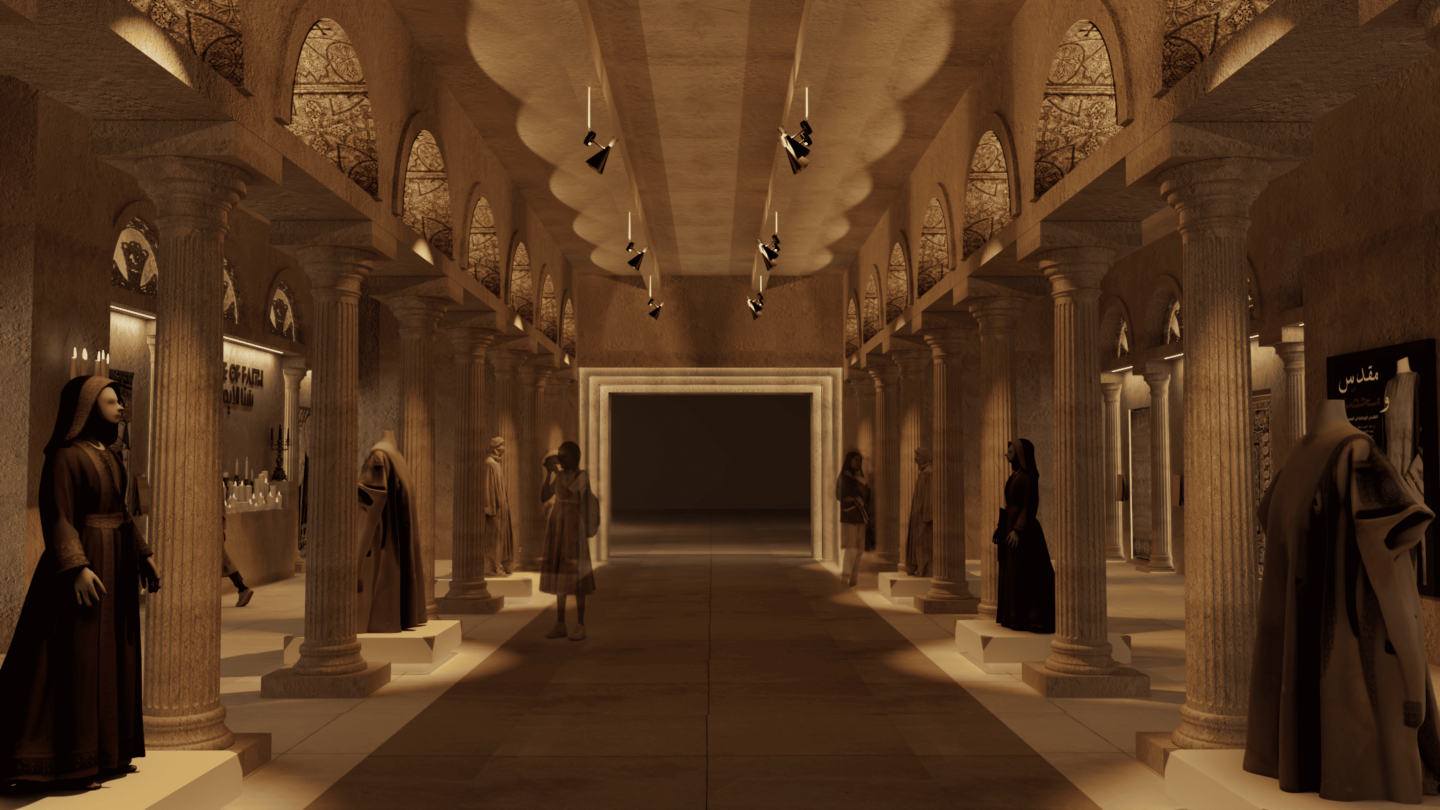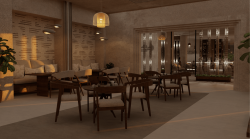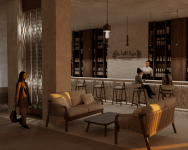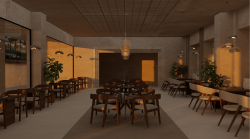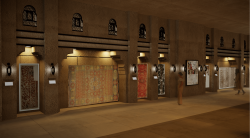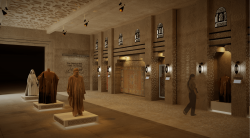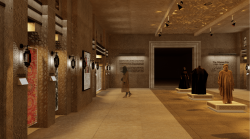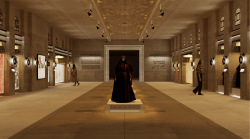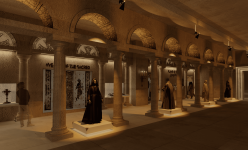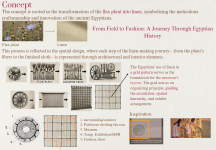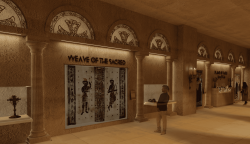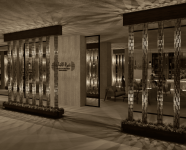The design of the Egyptian Fashion Museum is driven by the vision of creating an immersive, culturally rich experience that brings Egypt’s diverse and often underrepresented fashion heritage to the forefront. Using narrative design as a guiding principle, the museum leads visitors through a compelling, multi-sensory journey that traces the evolution of Egyptian fashion—from the elegance of ancient linen garments to the innovations of contemporary design. Inspired by the traditional craft of flax weaving, a cornerstone of ancient Egyptian textile production, the architectural concept draws on this symbolism to shape the spatial experience. The museum's layout echoes the texture and interlacing patterns of woven linen, metaphorically weaving together themes of tradition, identity, and progress.
This project responds to the lack of platforms dedicated to showcasing the significance of Egyptian fashion, particularly the historical value of textiles like linen. It aims to educate and inspire while preserving traditional craftsmanship and highlighting the artistry embedded in Egypt’s fashion evolution. The museum is not just a static exhibition space but a dynamic, living archive that encourages cultural exchange and fashion tourism. Through curated storytelling, sensory elements, and thoughtfully designed environments, the museum will foster pride in Egypt’s cultural legacy while positioning it within a global fashion context—bridging history and innovation in a meaningful, lasting way.
2024
The museum is curated to reflect seven significant historical eras, each offering unique insights into the past.
Chosen zones:
Museum 2 eras: byzantine and early medieval era (4th - 9th C. CE) / The Fatimid, Ayyubid,
and Mamluk Eras (10th - 16th C)
Cafeteria and outdoor shaded area
Design concept:
The concept is rooted in the transformation of the flax plant into linen, symbolizing the meticulous craftsmanship and innovation of the ancient Egyptians.
Designed: 2024/2025
Technical data:
Location: Fustat, Egypt
Systems: Hvac system, power supply system, acoustic system, Emergency system, lighting system, and security system.
program used: Autocad, Rhino 8, v ray , photoshop
linen used as a decorative lighting unit (3D-knitted textiles with form retention are fabric structures engineered using advanced knitting technologies that create three-dimensional, self-supporting geometries. These textiles retain a set shape without needing rigid frames due to their internal structural composition, elasticity, and material properties.)
Designed by Mira Ibrahim
Under the supervision of: Prof. Dr. Khaled Hawas, Prof. Dr. Hoda Madkour, Prof. Dr. Ola Hashem, Prof. Dr. Amany Mashhour, Dr. Tarek Fouad, Dr. Merihane Jebari, A.L. Ghada Ammar, A.L. Fatma Zakaria, Dr. Dalia Fekry, Dr.. Rawan Yasser
